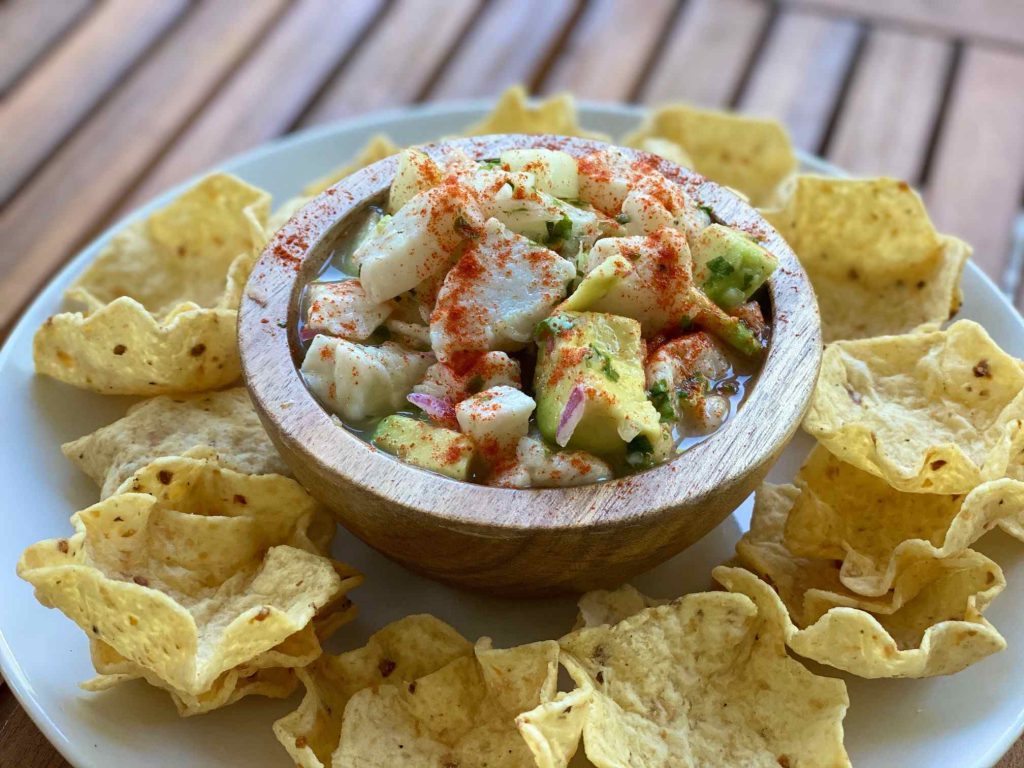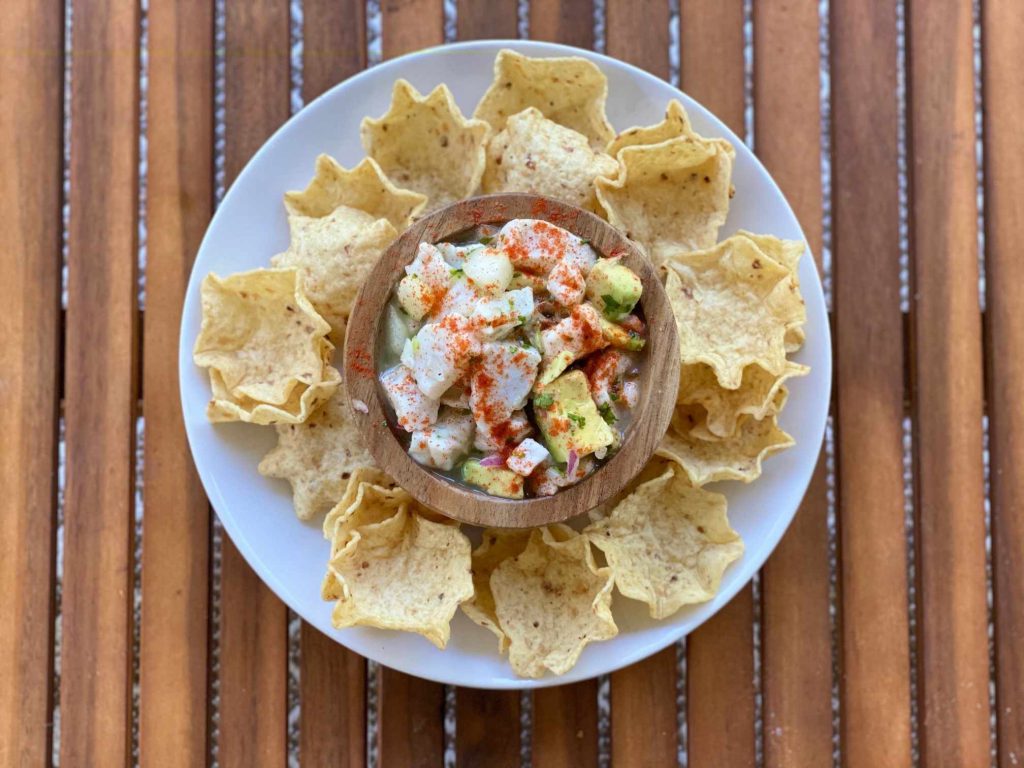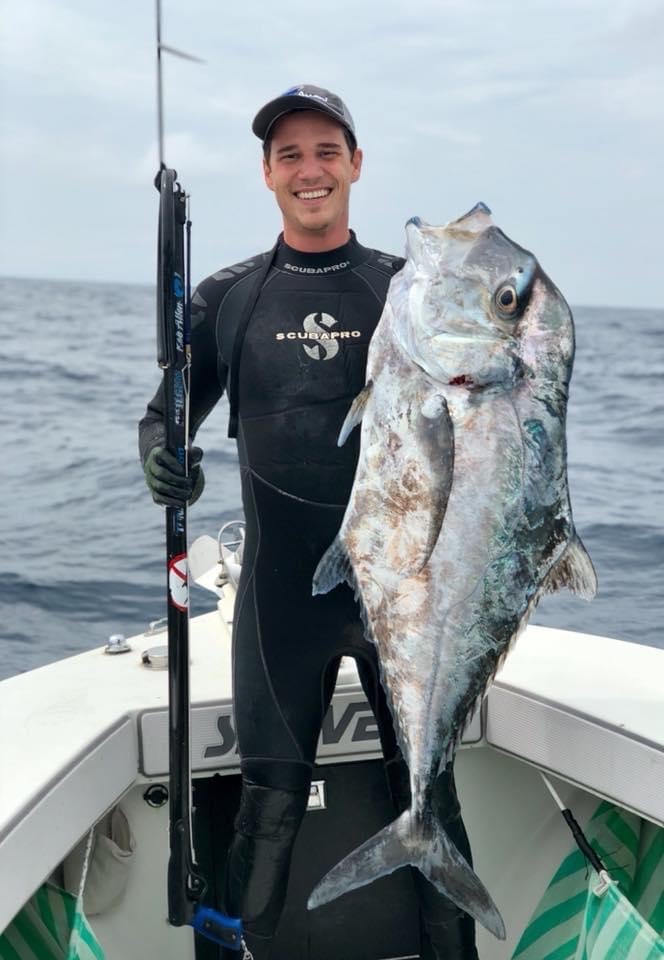Ceviche
Looking for a cool, tangy, delicious summertime snack? Look no further and prepare yourself some ceviche using fresh from Florida seafood! Ceviche is a dish that has been adopted by many Latin American cultures and each has their own recipe or variation. If you think it tastes good, add it in! The same can be said about the quantity of the ingredients to include when following this recipe. The seafood used for ceviche doesn’t have to be limited to African pompano or another species of fish, using shrimp in ceviche is also popular and equally delicious. Ceviche is a great seafood meal that is prepared by mixing ingredients, sitting back and letting the pH of the lime juice do the “cooking” which can be done by an individual with any experience level. 
How To Watch
The African pompano ceviche demonstration will take place at 6 pm EST on Wednesday, May 27th via Facebook Live on the Florida Sea Grant Facebook page! If you cannot catch the demonstration live, all videos and recipe cards will be archived for future viewing at this page. I will be available to answer your questions live during the event but don’t hesitate to contact me or your local Sea Grant Agent anytime after!
What You Will Need
- 1-1½ lbs African pompano (most white flesh seafood could be used as a substitute)

- ¾-1 cup lime juice (approximately 6-8 limes)
- ¼ red onion
- ¼ sweet yellow onion
- ½-1 jalapeno pepper
- 1/3 cup cilantro
- 3 cloves of garlic
- 1 avocado
- ½ cucumber
- 1 tablespoon olive oil
- ¼ teaspoon black pepper
- 1 ½ teaspoon Kosher salt
- A sprinkle of paprika
Cut and mix the ingredients, let them “cook” in the lime juice for 1- 2 hours in a cold place like a fridge or cooler before enjoying! This dish can be served with tortilla chips, on top of lettuce shells or simply with a fork!
Disclaimer: This dish is “cooked” chemically through the denaturation of protein that occurs when seafood is exposed to the low pH conditions of lime juice. There are certain microbial and parasitic risks when consuming sashimi or ceviche. When consuming potentially raw seafood, the FDA recommends freezing the flesh at -4 F for 7 days prior to preparing to minimize the risk of consuming active parasites. Although these dishes are delicious, special consideration should be taken by at risk health groups if enjoying “raw” seafood.
Filleting An African Pompano
Watch how to fillet tasty fish that can be caught/bought in waters around Florida and learn more about its interesting life history! I will be making additional videos as I catch more species so subscribe or check the page often to see if your favorite fish pops up!
More On The Species
The African pompano (Alectis ciliaris) belongs to the family Carangidae which includes pompanos, jacks and a few other members. Although Alectis Ciliaris is commonly referred to as a pompano, they do not belong to the genus of true pompanos Trachinotus which includes more familiar family members like Florida pompano and permit. African pompano can be found worldwide in tropical seas and in Florida are often inhabit offshore reefs and wrecks schooling mid water where they feed on fish and invertebrates. Juveniles of this species have long threadlike projections from their fins that resemble jellyfish tentacles which are thought to deter predators. The International Game Fish Association (IGFA) world record African pompano was caught in Daytona Florida in 1990 and weighed 50lbs 8 oz! 
African pompano are renowned gamefish and like many species belonging to the jack family, put up a great fight! In Florida schools of African pompano can be found offshore on deeper wrecks and reef bottom more dynamic vertical relief. These fish can be caught near these structures while trolling, jigging, or by drifting with live or dead bait. Since they often travel in schools, multiple hook-ups are not uncommon however targeting African pompano can be difficult as other pelagic fish may snatch up your bait first! Currently spearfishing for this species is allowed in federal water and is another common method for targeting these fish. For the most up to date regulations regarding harvest of African pompano please consult: http://www.eregulations.com/florida/fishing/saltwater/
 0
0
